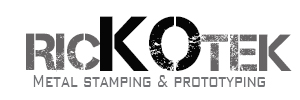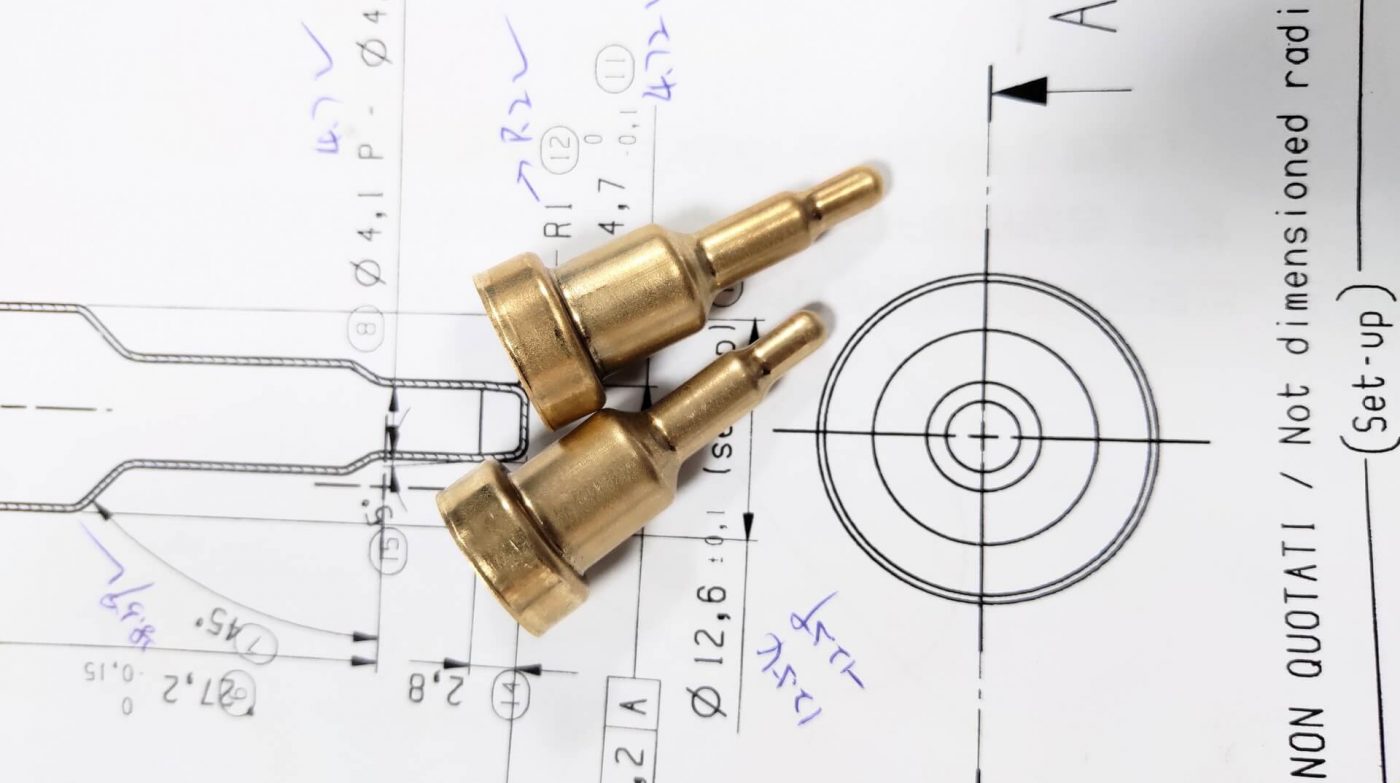Progressive die stamping is a metalworking technique that involves progressive dies to mold the sheet metal into a specific shape.
Frequently, this high-performance, high-volume procedure process requires only one pass of the press, thus eliminating the need for multiple operations to achieve the desired shape.
Progressive Die Components
The main components of a progressive die include:
– Die set
– Bushings (die buttons)
– Punch holder
– Punches
– Plate (section)
– Pins
– Stripper
– Slug clearance
Besides, progressive dies may feature various sensors, slides, stop blocks, and sub-liners. The main goal of all these components is to ensure the correct and accurate handling of the material.
The Main Stages Of The Progressive Die Stamping Process
The system automatically feeds the sheet metal into the progressive die and moves it along through a series of press stations, cutting and forming it in sections until the part takes its final shape.
A progressive die is a complex tool that makes use of high-tech sensors and precision piloting.
Thanks to these advanced components, the machine feeds the metal to each station with very high precision.
A progressive die should perform a series of complex operations such as piloting, embossing, extruding, notching, lancing, shaving, blanking, coining, perforating, and projecting.
The Good And The Bad Of Designing A Progressive Die As A Family Or Multiple-Up Die
It is possible to design the progressive die as a multiple-up or family die to manufacture multiple copies of the same item or multiple copies of different items from the same die,
All parts coming from a family die will fit together to create the finished product. A family die offers the advantage of producing large volumes of different parts simultaneously with very short production time and minimal material waste.
On the other hand, the family dies make it very difficult to meet critical dimensions on each part by using one single die.
If, for instance, there is a need to produce only one specific component, the family die won’t be able to create that single piece but must make all the parts it has been designed for.
Main Advantages Of Progressive Stamping
High Productivity
Depending on the complexity of the pieces, progressive stamping can produce up to 1,500 parts per minute.
Low Production Costs
Performing multiple operations in one die and one pass of the press allows saving both money and time.
Because of its specific design, the progressive die minimizes scrap, thus making better use of the material.
Also, this type of machine saves on set-up and labor times.
When Progressing Die Stamping May Not Be The Best Solution
Simple parts or low volume production needs do not require using a progressive die. Also, progressive stamping may call for additional operations to achieve the desired finishes.
Assessing Needs
To determine whether to choose progressive die stamping or a multiple-up die, metal stamping experts will make several evaluations, such as the piece’s critical dimensions, the material specifications and costs, and the annual volume forecasts.
Estimating Costs
Due to computer-aided design, specialists can create sketches of the tool and the metal strip to estimate production costs in different scenarios, choosing the ideal production method.
Rickotek is a professional metal stamping manufacturer in China since 2003, with ISO9001:2015 and IATF 16949:2016 certified. Contact us for a quote for any of your metal stamping projects.

